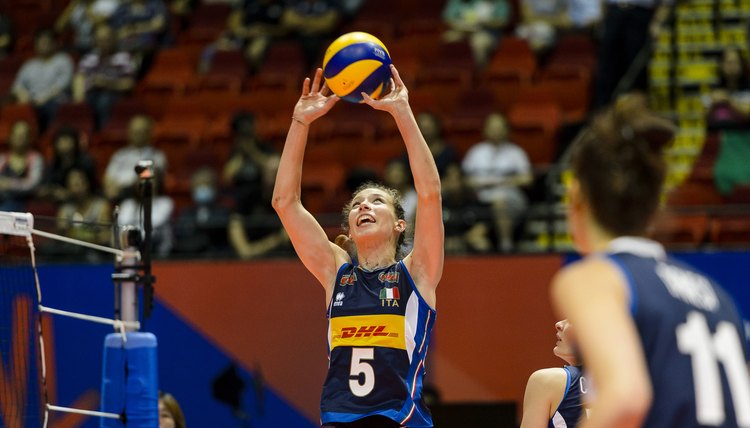Fun Volleyball Games for the Kids

Beginners must develop basic volleyball skills before they can effectively compete in the sport as part of a team. While high school age players prefer volleyball drills for specific skills, these can bore youth volleyball players. You can help younger children develop those skills while playing some simple, fun volleyball games that help build each child's fundamental ability and be built into pre-game warmups or physical education.
Balloon or Beach Ball Volleyball

The first of these fun games is beach ball volleyball. You can teach young players how to dig, serve, set and spike while playing a regular game of volleyball with a balloon or beach ball. This is a very slow game, but it teaches middle school aged youngsters to move laterally to keep the play alive. It also allows them to concentrate on hitting correctly. You don't even need a volleyball net or volleyball court to play this game; you can position players in a circle and award 1 point for a correct hit and subtract 1 point for an illegal hit as the players scramble to keep the balloon or beach ball off the ground.
Tip-Top Passing

Position two players about 15 feet apart. Have each player move the ball back and forth with proper passing technique, squatting under the ball and using only their fingertips to hit it. With younger and/or novice players, use a soft plastic ball instead of a volleyball. Call out the number of each correct hit. See how long they can go before double-hitting, palming or missing the ball. You can make this a competitive game by making the duo with the most reps the winner. This drill teaches proper volleyball passing techniques and teamwork between players.
What is the Piggy in the Middle volleyball drill?
Use cones, hula hoops or other markings to create two small boxed areas 10 to 15 feet apart. Put one player in each box and a player between the boxes. The players in the boxed areas volley the ball back and forth and the middle player tries to block the ball. The volley team gets 1 point for five consecutive legal volleys without either player leaving his box. The blocker gets a point for every block. The first person or team to 5 points wins. The gameplay in this game teaches hitting and blocking skills.
What is the Two-Player Under the Net drill?
Divide your group into two-player teams, featuring a receiver and a hitter. Stand on one side of the net and line up the teams on the other side. The first two players stand parallel to the net, about 10 feet apart. Throw the ball to the receiver, who tries to propel it up to the hitter. The hitter tries to hit the ball over the net. Either player can hit the ball one more time, if necessary, to get it over the net. If they fail, they lose one of their three lives and go to the end of the line. If they succeed, they come under the net. Once all the teams are on your side of the net or eliminated, switch sides and continue until only one team is left. Alternate receivers and hitters each round. When you get down to the last few teams, move them further from the net. This teaches the concepts of receiving, passing and hitting.
What is the Dead Fish Volleyball Drill?
Split your group into two teams. Set up court dimensions suitable for the kids' age group and/or skill level. Have the players from one team spread out and lay down on the court in a stationary position. Players on the other team take turns serving into that court. Give the serving team 1 point for serving onto the court and 2 points for hitting one of the dead fish, er, players. Subtract 1 point for serves into the net or otherwise out of play. After two rounds of serving, have the teams reverse roles. This game teaches serving accuracy.
King or Queen of the Court
This next game is a simple game but a classic PE game. Divide your group into volleyball teams of three or four players. Set up the court dimensions appropriately for your group. Have them play games of 3-on-3 or 4-on-4. Either team can win the point. The winning team stays on the court and serves. The losing team exits and the next group steps in. Teams rotate on and off the court quickly, keeping everybody busy. Players learn to hit into open areas and cover more court.
References
Writer Bio
Jeff Gordon has been reporting and writing since 1977. His most recent work has appeared on websites such as eHow, GolfLink, Ask Men, Open Sports, Fox Sports and MSN. He has previously written for publications such as "The Sporting News" and "The Hockey News." He graduated from the University of Missouri-Columbia School of Journalism in 1979 with a bachelor's degree.
